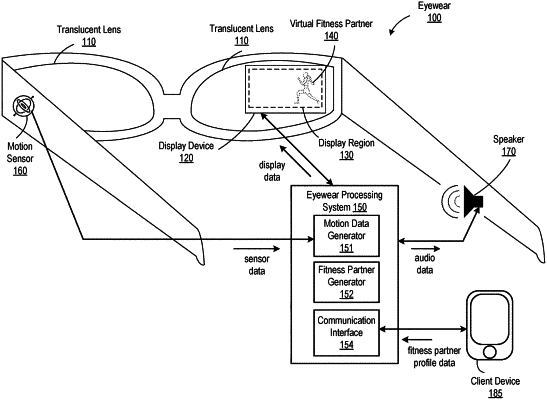| CPC G06T 19/006 (2013.01) [G02B 27/0172 (2013.01); G06F 3/012 (2013.01); G02B 2027/0141 (2013.01); G02B 2027/0178 (2013.01); H04W 4/80 (2018.02)] | 20 Claims |

|
14. A method for execution by a device that includes a memory, and at least one processor, wherein the method is executed in conjunction with instructions stored by the memory that, when executed by the at least one processor, cause the device to:
generate motion data corresponding to motion of a user of the device during performance of a fitness activity, wherein the motion data indicates a pace;
generate relative velocity data based on the motion data and a partner velocity vector, wherein the partner velocity vector is determined based on fitness partner profile data stored in the memory;
determine a virtual position vector based on the relative velocity data that indicates a magnitude and a direction of a virtual position of a virtual fitness partner relative to the user;
generate perspective data calculated based on the virtual position vector;
generate event trigger monitoring data based on the motion data, wherein the event trigger monitoring data indicates one of a plurality of fitness partner actions in response to determining that a corresponding one of a plurality of event trigger conditions has been met;
generate display data based on the perspective data, the event trigger monitoring data, and appearance data corresponding to the virtual fitness partner; and
display the virtual fitness partner within a display region and in accordance with the display data to virtually superimpose the virtual fitness partner upon images viewed by the user to simulate performance of the fitness activity by the virtual fitness partner along a virtual transit of the user, and wherein the virtual fitness partner is depicted to perform the one of the plurality of fitness partner actions in accordance with the event trigger monitoring data.
|